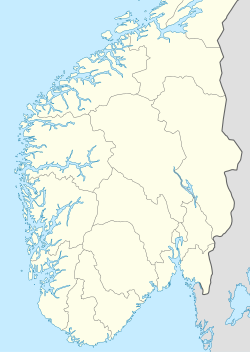Construction history
An archeological excavation that took place during 1978 [2] showed that the church was built on the remains of a previous church. It is thought to have been made with the use of embedded corner column technology at the beginning of the 11th century. [3]
Churches made during the 12th century were usually very small, often no more than 40 square meters, and were therefore often expanded, even during the Middle Ages and certainly just before and after the Reformation, which took place during 1537 in Norway.
The nave of the church was first expanded to the west during the Middle Ages, when the original apse of the chancel was also removed and the chancel itself elongated. Again, during that period, an extra center column was added. The chancel was torn down again in 1684, when a new and wider chancel was made, with the same width as the nave. Then, during the period 1721–1723, the church was made into a cruciform. A new ridge turret had to be made, to fit the new shape. Later, in 1819, a new vestry was added to the north wall of the chancel. [4]
Exterior
The exterior walls were paneled in 1760.
Interior
Benches with ornately decorated sidewalls were added to the nave in 1624. The oldest part of the interior was probably richly ornately decorated by painting during 1656, the expansions during 1684 and 1723. Two scary halfmasks are quite visible on the poles of the chancel, and according to myth they were able to capture demons.
This page is based on this
Wikipedia article Text is available under the
CC BY-SA 4.0 license; additional terms may apply.
Images, videos and audio are available under their respective licenses.









